What's new

IWH welcomes new Board officers, members
Kate Lamb, a lawyer and head of People and Client Services at the Law Society of Canada, has been elected Chair of the Institute for Work & Health (IWH)’s Board of Directors. Lamb takes over the position held for over six years by Kevin Wilson, a former Assistant Deputy Minister in the Ontario Ministry of Labour, Training and Skills Development. This was one of many changes made to the IWH Board membership at the Board’s September 2021 meeting, including the addition of three new Board members.

IWH Updates - Fall 2021
IWH welcomes new Board officers, members ~ IWH research associate promoted to associate scientist
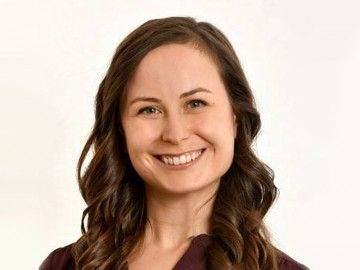
IWH research associate promoted to associate scientist
Congratulations to Dr. Kathleen Dobson, who has been promoted to associate scientist at the Institute. Dobson joined IWH in 2016 as research associate and currently holds a Syme fellowship in work and health. She’s completing her PhD in epidemiology at the University of Toronto’s Dalla Lana School of Public Health.

Now recruiting health-care providers for new ECHO OEM mentoring project
A new Project ECHO program on occupational and environmental medicine (OEM) has been launched! This telementoring project, which includes a research component led by IWH, is designed to offer support and advice to Ontario health-care providers who have patients with work-related health conditions. The program is now recruiting primary care providers—including physicians, physician assistants, nurse practitioners, registered nurses and other allied health professionals. Sessions are held via videoconference each Friday from September 17 to December 3, 2021.
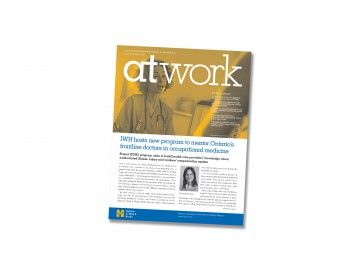
Summer issue of At Work is out
In the Summer 2021 issue of At Work, read about:
- a new telementoring pilot program for health-care providers on occupational and environmental medicine
- concerns about health, finances and workplace support among people with disabilities
- the link between lacking employment standards and vulnerability to work-related injury risks
and more...

IWH Updates - Summer 2021
Mustard post-doc fellow named IWH associate scientist ~ IWH research associate awarded Health System Impact Fellowship ~ XXII World Congress on Safety and Health at Work launches in less than a month
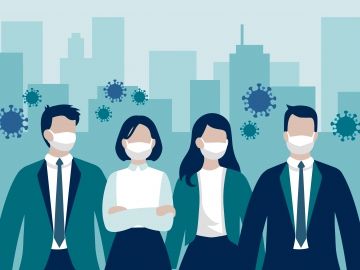
What research can do: Partnering on a tool to estimate occupational risks of COVID
A collaboration led by Public Health Ontario, with IWH support, has led to the development of a data-visualization tool to estimate the risk of COVID exposure at work. The Occupational Exposure to COVID-19 Risk Tool lets users estimate COVID exposure risk by key sociodemographic and work characteristics, across different occupations and industries. This article looks at the research collaboration behind the tool.
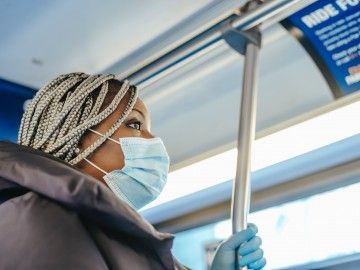
Workers’ COVID concerns related to their work conditions, not disability status: study
People with both physical and mental health disabilities were the most concerned about their work, health and finances during the early part of the pandemic. That’s according to an Institute for Work & Health (IWH) study led by Senior Scientist Dr. Monique Gignac. Notably, the study found concerns were linked to people’s work conditions, not to their health or disability status.

Grant round-up: A selection of new studies supported by external grants in 2020-21
Understanding the use of cannabis to treat work-related conditions, monitoring opioid-related harms among Ontario workers, supporting first responders after a post-traumatic stress injury, and sex/gender differences in work-related communicable disease exposure. These are among the latest IWH studies to be supported by external grants.
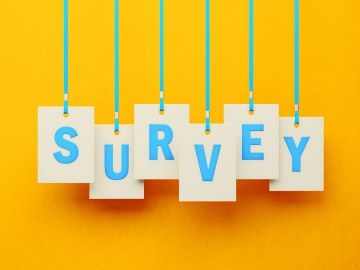
Sharing results from our recent stakeholder survey
Last spring, we invited subscribers to IWH products to tell us how you use and share IWH research findings and resources. Our deepest thanks go out to all those who took part. A report sharing the results of that stakeholder survey is now available on our website.

What Research Can Do: A look back and forward at COVID-19 research from IWH
As vaccination rates pick up steam across the country, there’s a real sense we are climbing out and emerging into a new normal. It’s with this sense of hope that we look back at our research strategy during the pandemic and consider what it will look like going forward. We also take a look at the findings to come.
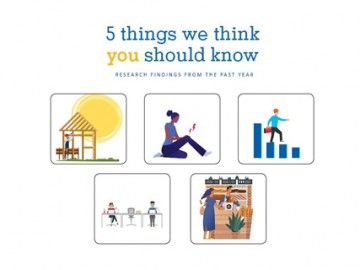
Five things we think OHS practitioners should know: findings from recent IWH research
Five of our most practical research findings from the past year for professionals in occupational health and safety (OHS) are all together in one handout. The 2021 edition of 5 Things We Think You Should Know is now available. Please download and share.

IWH set to launch telementoring project on occupational medicine for health professionals
Frontline health-care providers play an important role in helping people return to work following a work-related injury or illness. But family doctors and other frontline practitioners may lack familiarity with the workers’ compensation system and return-to-work processes. A new telementoring project is being launched in Ontario to address this skills gap. Project ECHO on Occupational and Environmental Medicine, to be hosted by the Institute for Work & Health (IWH), will launch in the fall. It will be the first such project on occupational medicine, using the innovative hub-and-spoke health-care mentoring model called ECHO—short for Extension for Community Healthcare Outcomes—that’s now used around the world.

Unemployment benefits linked to lower mortality rates over 10 years: IWH study
We know that being out of work puts people at risk of short- and long-term health consequences—including higher death rates. A new Institute for Work & Health study looks at whether—and how much—having income support during unemployment can lessen the negative impact.
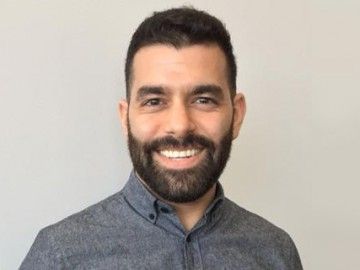
Mustard post-doc fellow named IWH associate scientist
Congratulations to Dr. Faraz Vahid Shahidi, who has been named associate scientist at the Institute for Work & Health. Shahidi, a PhD in social and behavioural health sciences from the University of Toronto and an MPhil in comparative social policy from the University of Oxford, recently completed the Mustard post-doctoral fellowship in work and health at the Institute.

Weaker OHS procedures, policies explain small employers’ higher injury risks: study
Workers at small firms say they are more frequently exposed to hazards and report more work-related injuries and illnesses than workers at large firms. But an Institute for Work & Health study finds the injury risks in large and small firms even out when weaker occupational health and safety policies at small firms are taken into account.

Claim suppression study in B.C. finds half of work-related injuries, illnesses not reported
About half of British Columbia workers who have a lost-time work injury or illness don’t report the injury or illness to WorkSafeBC. This is according to a recent study on claim suppression commissioned by WorkSafeBC and conducted by the Institute for Work & Health (IWH) and Prism Economics and Analysis. It found the main reasons for not reporting are workers not knowing they are entitled to compensation or how to apply, and thinking it’s not worth their time to make a claim. As detailed in a policy briefing, the study also found an estimated four to 13 per cent of people with work-related injuries in B.C. experience claim suppression—i.e. pressure or inducement from an employer not to make a claim.

XXII World Congress program for virtual event now out
The XXII World Congress on Safety and Health at Work is now less than 100 days away! Check out the line-up for the virtual event, taking place September 20-23, 2021. Co-hosted nationally by IWH, the Congress offers more than 30 sessions and symposia, featuring 150 speakers from around the world and focusing on three themes: innovations in addressing long-standing occupational health and safety (OHS) challenges, implications of the changing world of work for OHS, and advancing a culture of prevention.
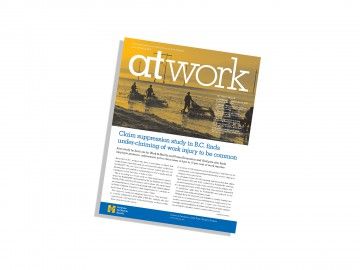
The Spring 2021 issue of At Work is out
In this issue, read about our joint study on claim suppression in British Columbia. Learn about the factors that raise injury risks for small workplaces, and find out what nine future of work trends may mean for workers already facing barriers to the labour market.

Help design ways to support the future employment of young people with disabilities
Are you a young person living with a disabling health condition? Do you have direct experience supporting young people with disabilities? Or do you have expertise in policy, labour markets, disability and employment or strategic foresight?
If you answer yes to any of the above, we invite you to take part in an online activity aimed at designing better future work supports for young people with disabilities. For more information about this study, please contact Kay Nasir by emailing knasir@iwh.on.ca.

Benefits outweigh costs when protection from UV radiation is offered to construction workers
Ultraviolet radiation due to sun exposure is one of the most common causes of work-related cancer in Ontario. A new study by IWH examines the costs and benefits of providing protective clothing and shade shelter to avert work-related non-melanoma skin cancer over 30 years.

Mark Day of Mourning on April 28
On April 28, we mark the Day of Mourning to remember people who are hurt or killed on the job. And this year again, it is an opportunity to pay tribute to essential workers who continue to provide the health care, goods and services we depend on, and to mourn those who have lost their lives or health to COVID-19 in the course of doing so. Let’s all take a moment on the day to resolve to do what we can to ensure the health and safety of all workers.
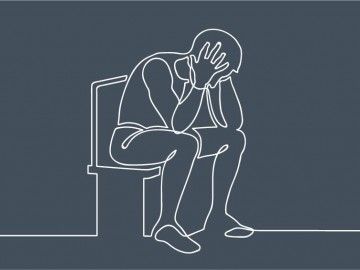
How much does depression set Canadian workers back in earnings?
Does depression hurt the earning potential of affected workers in Canada and, if so, how much? That was what IWH Research Associate Kathleen Dobson set out to find. Using an innovative technique, she calculated the average drop in workers’ earnings in the first year after workers experienced a depressive episode—and how much ground they continued to lose over 10 years.
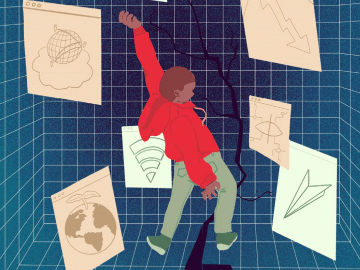
Nine trends in the future of work that may impact vulnerable workers
In the next two decades, the world of work will look very different than it does today. Major forces are driving change: digital technologies, artificial intelligence, climate change, demographic shifts, and more. What does the future hold for people who already face barriers in the labour market? In a new project report, an IWH team led by Scientist Dr. Arif Jetha lays out nine trends and what they may mean. A summary of the report is also available in At Work.

Disability and Work in Canada conference videos are now available
The devastating impact of COVID-19 on employment for people with disabilities was a major theme at the annual Disability and Work in Canada conference, held late last year. But participants also heard about ongoing initiatives on strengthening income support, promoting workplace inclusion, measuring progress—and many others that make up a pan-Canadian strategy to improve paid employment opportunities for persons with disabilities. Conference videos are now available at the Centre for Research on Work Disability Policy conference page.

Upcoming IWH Speaker Series presentation: Exploring differences between stress and musculoskeletal claims
Workers’ compensation boards in several provinces across Canada now recognize work-related chronic stress claims. In the state of Victoria, Australia, where such claims have been accepted for many years, differences are found between mental health and musculoskeletal claims in return-to-work outcomes and processes. In an IWH Speaker Series presentation on April 6, IWH Senior Scientist and Scientific Co-Director Dr. Peter Smith delves into the differences between these two types of claims and explores the lessons they may hold for Canada.